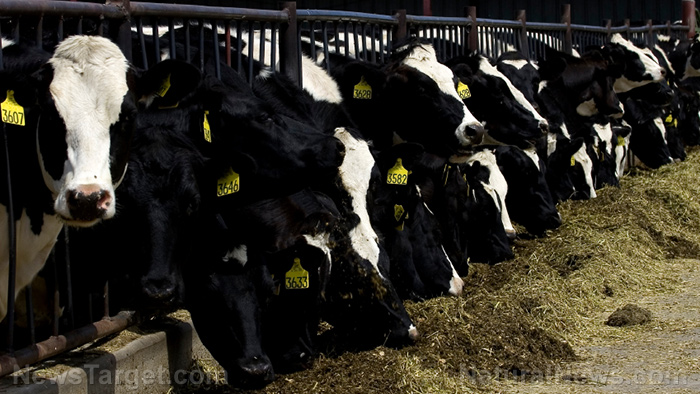OBESITY now a bigger problem than HUNGER, with more than 1B people around the world deemed too fat
03/06/2024 / By Ava Grace

For the first time, obesity has been declared a bigger health problem than hunger, with one billion people around the world now deemed too fat.
According to the Daily Mail, roughly 159 million children and adolescents and 879 million adults weigh more than their relative height – putting them under the obese classification. All in all, the number of obese individuals worldwide is now 1.038 billion, amounting to around one in eight people. Meanwhile, underweight rates dropped among children and adolescents and more than halved among adults worldwide.
While America is often thought of as the most obese country in the world, its 139 million obese population pales in comparison to China’s 200 million or India’s 350 million. Thus, obesity is so prevalent it has become more common than being underweight in most nations – including many low- and middle-income countries that have previously struggled with undernourishment. (Related: Obesity Industrial Complex pushes junk food on children so they grow up to become pharmaceutical junkies.)
But according to the World Health Organization (WHO), obesity is no laughing matter as the condition is linked to an increased risk of numerous serious health problems. “In the past, we have been thinking of obesity as a problem of the rich,” said Dr. Francesco Branca, director of the WHO’s Department of Nutrition for Health and Development. “Obesity is a problem of the world.”
A new study published in the Lancet further bolsters Branca’s remarks, noting that obesity rates among young people worldwide quadrupled between 1990 and 2022. It also found that obesity rates among adults more than doubled. Looking closely at the figures for adults, the study found that the obesity rate among women more than doubled and nearly tripled in men for the same period.
U.S. is not the most obese country
“It is very concerning that the epidemic of obesity that was evident among adults in much of the world in 1990 is now mirrored in school-aged children and adolescents,” said senior study author Majiz Ezzati, a professor at Imperial College London.
“At the same time, hundreds of millions are still affected by under-nutrition, particularly in some of the poorest parts of the world. To successfully tackle both forms of malnutrition it is vital we significantly improve the availability and affordability of healthy, nutritious foods.”
The study also found that when broken down in terms of proportion of the population, the U.S. ranks 10th for men and 36th for women when it comes to obesity out of 190 countries. Several Pacific nations recorded the highest prevalence of obesity – Tonga, American Samoa, Polynesia and Micronesia, Cook Islands and Niue.
The availability of unhealthy food compared to healthier counterparts is thought to be behind the soaring obesity rates in many island nations. Healthier snack options are expensive and difficult to find. Thus, companies selling unhealthy foods have taken advantage of this predicament, launching big marketing campaigns to promote their products.
Former Tongan legislator Papiloa Bloomfield Foliaki also lamented this during an interview with the BBC. According to her, most Tongans are under the impression that anything imported is superior – including food. Foliaki also noted that residents of the Pacific nation are not educated about how to eat healthy.
Another key cause of obesity in the Pacific island nations is cheap cuts of meat from Western countries. During the middle of the 20th century, mutton flaps from New Zealand and turkey tails from the U.S. – both cheap and fatty cuts of meat – started arriving to the islands. These eventually became popular, contributing to the obesity epidemic in these nations.
Head over to FightObesity.news for more stories about obesity.
Watch this video about obesity, heart failure and the obesity paradox.
This video is from the Daily Videos channel on Brighteon.com.
More related stories:
Get FAT enough, get FREE SEATS on airlines.
CDC data reveals SURGE in OBESITY rates in the U.S., with some states reaching alarming levels.
Diabetes and obesity drugs linked to thyroid cancer.
Sources include:
Submit a correction >>
Tagged Under:
children's health, dangerous, fast food, fight obesity, food supply, frankenfood, health science, men's health, obesity, unhealthy diet, women's health, worldwide obesity
This article may contain statements that reflect the opinion of the author
RECENT NEWS & ARTICLES
JunkFood.News is a fact-based public education website published by Junk Food News Features, LLC.
All content copyright © 2018 by Junk Food News Features, LLC.
Contact Us with Tips or Corrections
All trademarks, registered trademarks and servicemarks mentioned on this site are the property of their respective owners.




















